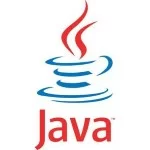Mocking Serverless & gRPC: When Mockito Isn’t Enough
Modern distributed systems combine serverless functions and gRPC microservices, creating new testing challenges that traditional mocking tools can’t handle. Let’s explore robust solutions for these architectures.
1. The Limitations of Classic Mocking (Mockito)
While Mockito works well for typical Java classes, it falls short for:
- gRPC services (complex stub generation)
- Serverless dependencies (AWS SDK, DynamoDB, SQS)
- Protocol Buffers (generated message classes)
1 2 3 | // Traditional Mockito struggles with gRPCGreeterGrpc.GreeterStub stub = Mockito.mock(GreeterGrpc.GreeterStub.class); // Fails: gRPC stubs are final classes |
Solution 1: gRPC In-Process Testing
The gRPC team provides a built-in solution:
01 02 03 04 05 06 07 08 09 10 11 12 13 14 15 16 | @BeforeEachvoid setup() throws IOException { // Create real server with mock implementation server = InProcessServerBuilder.forName("test") .addService(new GreeterImplBase() { // Mock implementation @Override public void sayHello(HelloRequest req, StreamObserver<HelloReply> obs) { obs.onNext(HelloReply.newBuilder().setMessage("Mocked!").build()); obs.onCompleted(); } }).build().start(); // Create in-process channel channel = InProcessChannelBuilder.forName("test").build(); stub = GreeterGrpc.newStub(channel);} |
Key Benefits:
- Tests actual protocol buffers serialization
- Verifies full request/response flow
- No network dependencies
Solution 2: Proto-Mocking with ProtoBuf
For complex protocol buffer scenarios:
01 02 03 04 05 06 07 08 09 10 11 | HelloRequest request = HelloRequest.newBuilder() .setName(anyString()) // Problem: exact matching required .build();// Solution: Protobuf matchersimport static com.google.protobuf.TextFormat.shortDebugString;import static org.mockito.ArgumentMatchers.argThat;stub.sayHello(argThat(req -> shortDebugString(req).contains("name: \"test\"")), any(StreamObserver.class)); |
2. Serverless Mocking with WireMock + TestContainers
AWS Lambda Testing
01 02 03 04 05 06 07 08 09 10 11 12 13 14 15 16 17 18 19 20 21 22 23 | @Containerstatic WireMockContainer wiremock = new WireMockContainer( WireMockConfiguration.options() .extensions("com.amazonaws.lambda.java"));@Testvoid testLambdaInvocation() { // Mock AWS Lambda API wiremock.stubFor(post("/2015-03-31/functions/MyFunction/invocations") .willReturn(okJson("{\"statusCode\":200}"))); // Configure AWS SDK to use mock endpoint AWSLambda client = AWSLambdaClientBuilder.standard() .withEndpointConfiguration(new EndpointConfiguration( wiremock.getBaseUrl(), "us-east-1")) .build(); // Test Lambda invoker InvokeResult result = client.invoke(new InvokeRequest() .withFunctionName("MyFunction")); assertEquals(200, result.getStatusCode());} |
DynamoDB Local with TestContainers
01 02 03 04 05 06 07 08 09 10 11 12 13 14 15 16 17 | @Containerstatic GenericContainer dynamoDB = new GenericContainer("amazon/dynamodb-local:latest") .withExposedPorts(8000);@Testvoid testDynamoAccess() { // Configure client to use container AmazonDynamoDB client = AmazonDynamoDBClientBuilder.standard() .withEndpointConfiguration(new EndpointConfiguration( "us-east-1")) .build(); // Create table and test operations client.createTable(new CreateTableRequest(...)); // Test queries/updates} |
3. Advanced Patterns
gRPC + Serverless Integration Testing
01 02 03 04 05 06 07 08 09 10 11 12 13 14 15 16 17 18 19 20 21 22 23 24 25 26 27 28 29 | @Testcontainersclass PaymentServiceTest { @Container static GenericContainer grpcService = new GenericContainer("payment-service:latest") .withExposedPorts(6565); @Container static WireMockContainer awsMocks = new WireMockContainer(); @Test void processPayment() { // Configure gRPC client to container ManagedChannel channel = ManagedChannelBuilder.forAddress( grpcService.getHost(), grpcService.getMappedPort(6565)) .usePlaintext() .build(); // Configure AWS SDK to use mocks AmazonSQS sqs = AmazonSQSClientBuilder.standard() .withEndpointConfiguration(new EndpointConfiguration( awsMocks.getBaseUrl(), "us-east-1")) .build(); // Test full flow PaymentResult result = PaymentClient.process(channel, sqs, testData); assertTrue(result.isSuccess()); }} |
4. Best Practices
- Layer your tests:
- Unit test business logic with traditional mocks
- Integration test gRPC with in-process servers
- System test with TestContainers
- Performance considerations:
1 2 | @ClassRule // JUnit 4public static WireMockClassRule wiremock = new WireMockClassRule(); |
Use class-level rules to avoid container restart per test
3. CI/CD integration:
1 2 3 4 5 6 | # GitHub Actions exampleservices: dynamodb-local: image: amazon/dynamodb-local ports: - 8000:8000 |
These approaches provide production-like testing while maintaining test isolation and speed. The combination of in-process gRPC testing and containerized service mocks covers the full spectrum of serverless and microservice testing needs.
5. Conclusion: Choosing the Right Mocking Strategy for Modern Architectures
As cloud-native architectures evolve, traditional mocking tools like Mockito are no longer sufficient for testing complex interactions in gRPC and serverless systems. By leveraging in-process gRPC servers for protocol-level validation, WireMock for API contract testing, and TestContainers for cloud service emulation, developers can build comprehensive test suites that closely mirror production behavior. These approaches bridge the gap between unit tests and full environment deployments, ensuring reliability without sacrificing development velocity. While the setup requires more initial effort than conventional mocking, the payoff comes in reduced debugging time, fewer integration surprises, and higher confidence in distributed system behavior. The key is matching the mocking strategy to the test’s scope—whether it’s verifying a single gRPC call with protobuf matchers or validating an entire serverless workflow with containerized AWS services. In the era of microservices and FaaS, robust mocking isn’t just convenient—it’s essential.


